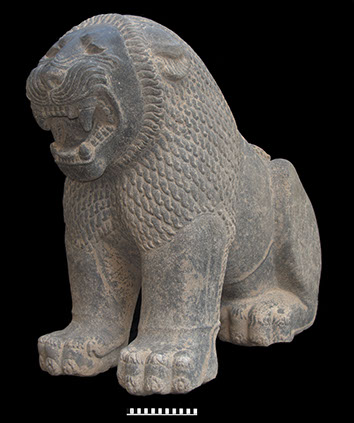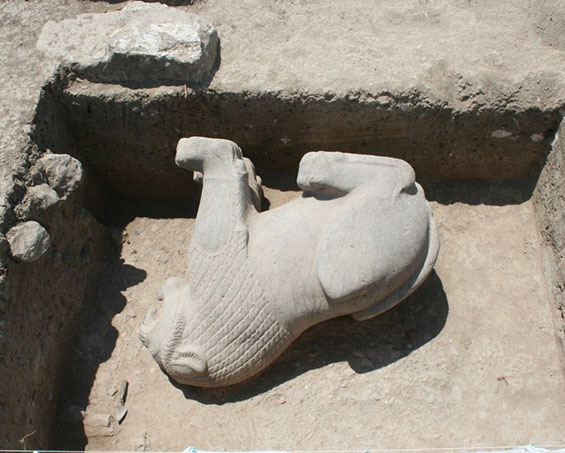
In 2011, while excavating in the south of Temple XVI (Field 7) in an effort to investigate the relationship between the twin temples, a unique and unexpected discovery was made.
Found ritually deposited was a completely intact statue of a seated lion. The artistry, which bears a strong relationship to the original twin lion columned base found in the portico of Temple II in the 1930's excavations are strongly suggestive of the same workshop, if not the hand responsible for the two pieces. The context, presently still unclear, might represent a gate-like structure which provided access to Temples XVI or II.

Its deposition, dated to the mid-ninth century BC through radiocarbon analysis, also suggests that, contrary to common understanding, these amazing works of art are of local development, highlighting the importance of the local Neo-Hittite artistic traditions. Furthermore, it suggests the flow of artistic influence between the Assyrian empire and its neighbors was significantly more complicated and bi-directional than had previously been understood.

.jpg)
The delivery of the lion to the 'old' Hatay Archaeological Museum in 2011.


